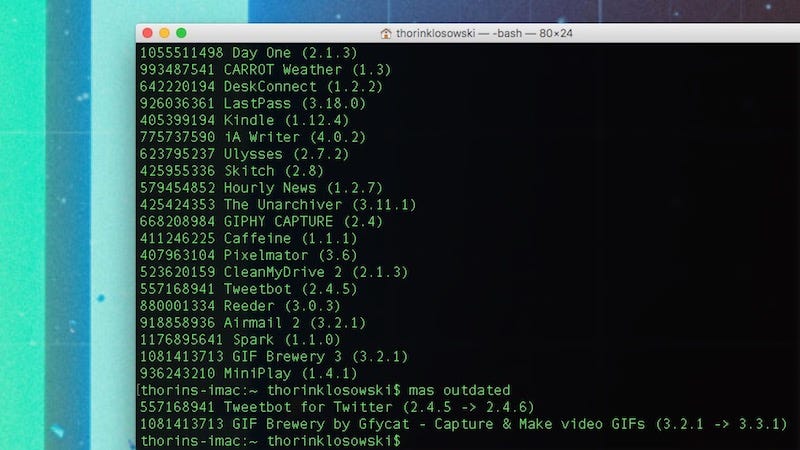Simply launch Finder and select the Applications folder from the left sidebar. Alternatively, press the keyboard shortcut of Shift, Command, and A. This will display all apps that were added through Mac App Store, came together with the operating system, installed through package managers, and manually attached by users via the drag-and-drop. Using Launchpad: Open Launchpad. It’s the silver icon in the Dock that looks like a rocket.
Terminal User Guide
You can use the command-line environment interactively by typing a command and waiting for a result, or you can use the shell to compose scripts that run without direct interaction.
Execute commands in the shell
- The at command is used to schedule commands and other programs to run at a specific date.
- NEW IN PROMPT 2. Panic Sync Finally. Sync your favorite servers, passwords, private keys, and clips, between Prompt on all of your iOS devices. It’s fast, it’s extremely secure, and best of all, it’s free. Clips Put your most-used commands and text bits into clips and access them with a single tap via Prompt.
- With Command.app your associates will have all their up-to-date collateral, rich-media and business tools at their fingertips in one intuitive, easy-to-use app. Command.App helps businesses guarantee a great first impression, and exceed customer engagement expectations no matter where they are on their customer journey.

In the Terminal app on your Mac, enter the complete pathname of the tool’s executable file, followed by any needed arguments, then press Return.
If a command is located in one of the shell’s known folders, you can omit path information when entering the command name. The list of known folders is stored in the shell’s PATH environment variable and includes the folders containing most command-line tools.
For example, to run the ls command in the current user’s home folder, enter the following at the command prompt, then press Return:
To run a command in the current user’s home folder, precede it with the folder specifier. For example, to run MyCommandLineProg, use the following:
% ~/MyCommandLineProgTo open an app, use the open command:
Apple Command Prompt
When entering commands, if you get the message command not found, check your spelling. Here’s an example:
Command Line App Macbook
% opne -a TextEdit.app zsh: opne: command not foundTerminate commands
In the Terminal app on your Mac, click the Terminal window that is running the command you want to terminate.
Press Control-C.
This sends a signal that causes most commands to terminate.
Command Prompt Mac Os
Repeat previously entered commands
The commands you enter during a session are saved so you can repeat a previously used command without retyping it.
In the Terminal app on your Mac, press the Up Arrow key.
The last command you entered appears on the command line.
Continue pressing the Up Arrow key until you see the command you want, then press Return.
Command Prompt Software Mac
